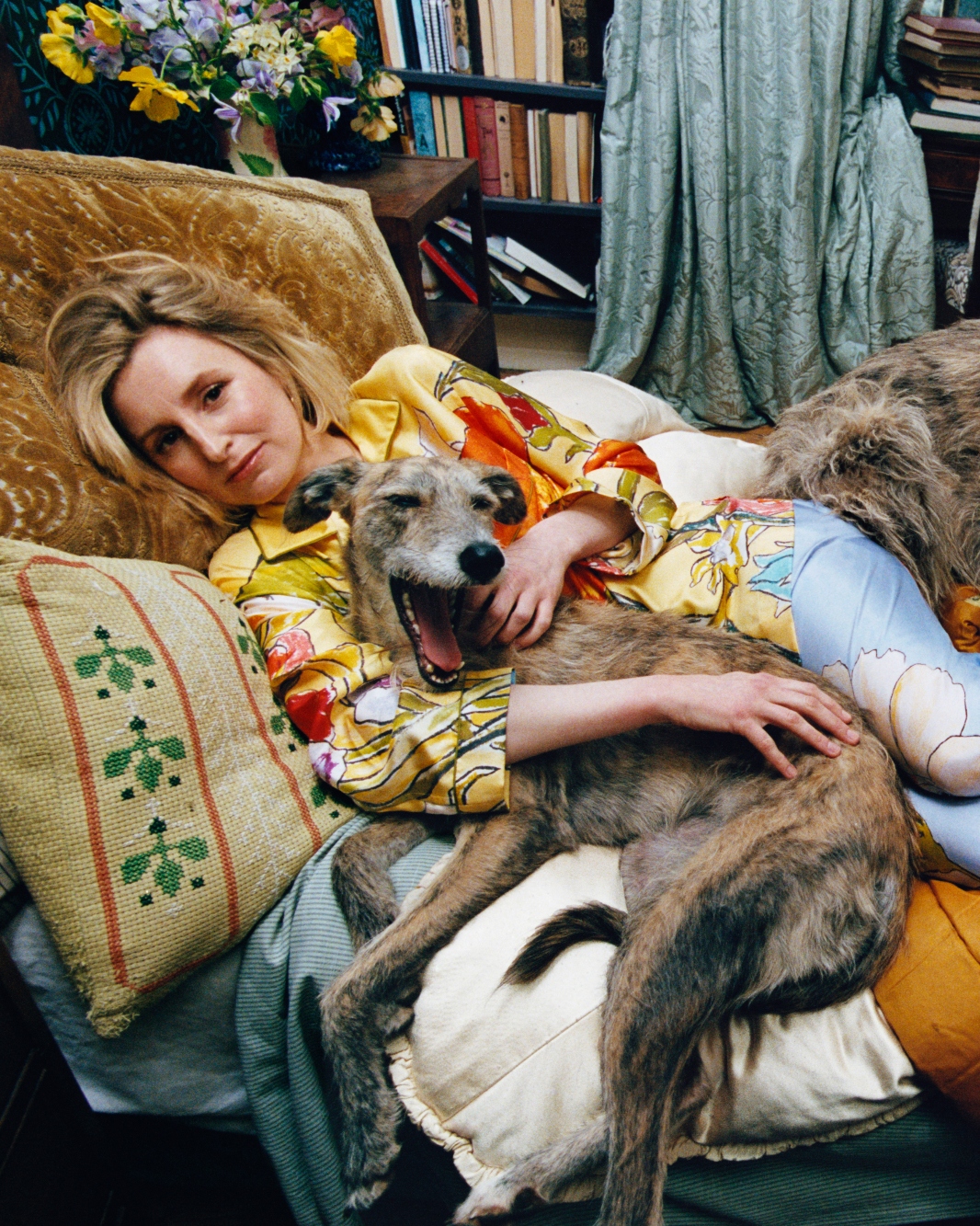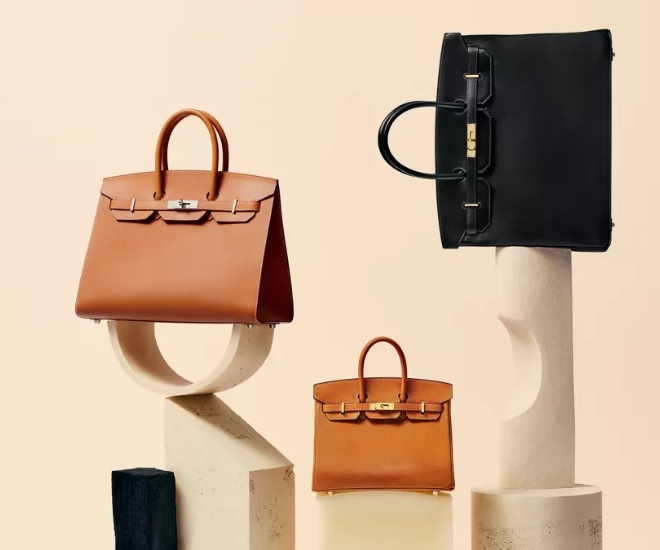
We are almost halfway into 2025 and it has become apparent that the luxury industry is facing its fair share of financial struggles amid an ongoing wave of economic uncertainties. Market highs and lows come in waves, from the post-pandemic boom to the disruptions of the Trump-era tariffs that have led to the uncertain market conditions consumers now face. As these economic pressures continue to mount, even the most storied of luxury brands like Burberry are tightening their belts.
With rising costs and shifting consumer habits reshaping the luxury market, companies are increasingly turning to cost-cutting measures and streamlined operations to stay competitive. In today’s luxury landscape, financial survival no longer hinges on trend-chasing or entry-level thrills. It is about classic, hero pieces and what consumers believe are purchases that retain some form of tangible value. As consumers abandon impulse for investment, brands without a legacy or hero staple are seemingly falling behind.
Dawn of Luxury Cutbacks
The Business of Fashion (BOF) reports that as part of a cost-cutting push, Burberry would cut approximately 1,700 jobs — largely in office roles — along with adjustments to its retail operations and the phased elimination of the night shift at its Castleford trenchcoat plant. Despite reporting an adjusted operating profit of GBP 26 million (approximately USD 35 million), the British luxury giant still faced challenges — swinging to a net loss of GBP 66 million for the year ending in March, a stark contrast to the GBP 383 million pre-tax profit it posted in the previous period.

Despite these challenges, the brand’s shares surged 9 percent in early trading — buoyed by better-than-expected quarterly sales that fell 6 percent — compared to the negative 8 percent forecast by Bloomberg. This could be partially attributed to the faster-than-anticipated progress under new CEO Joshua Schulman. This places Burberry’s performance close to the 5 percent decline reported by LVMH’s fashion division and significantly better than the double-digit drops at Kering, suggesting the turnaround is gaining traction in a challenging luxury market.

Aside from Burberry, Kering’s Gucci saw its first-quarter sales fall by 25 percent. Kering had noted in April that sales had dropped by 14 percent overall as Saint Laurent and Balenciaga were also pinched by the current downturn in luxury demand. Fellow fashion conglomerate and rival LVMH also reported falling sales in its fashion division, down 5 percent at the start of 2025.
Read More: Glorious Absurdity and Extreme Embellishments Dominate Couture Fashion Week
No More “Little Pleasures”
The lipstick theory — once a fail-safe concept during times of economic uncertainties — is now proving to be increasingly obsolete for the wary consumer. A concept popularised by Leonard Lauder during the 2008 financial crisis, the lipstick effect is an economic concept suggesting that during periods of financial downturn or economic uncertainty, consumers tend to spend more on small, affordable luxuries — like premium lipstick — rather than splurging on bigger-ticket items like designer handbags or luxury watches. Long before the creation of the concept, an iteration of the term was seen during the Great Depression of the 1920s when sales of small beauty items like lipstick reportedly remained strong despite the broader economic struggles. Now, more than a century later, the theory is facing its challenges as consumers have shifted their spending patterns towards practical, long-lasting purchases over impulse buys.

Brands like Coty have reported shrinking sales and job cuts, while even industry giants like L’Oréal and Estée Lauder are seeing growth slow dramatically. The problem goes beyond short-term economic turbulence. Adding to the challenge is a shift in consumer mindset. In an oversaturated market, shoppers are increasingly being more selective — opting for quality products — while platforms like social media TikTok drive unpredictable trends that can overshadow even the most carefully crafted brand messages. It is clear that value does not only mean lower prices but a more meaningful, invested approach to product development. In other words, today’s beauty market is less about quick hits and more about enduring relevance, suggesting that the old lipstick theory may be losing its shine in an era of cautious consumers.
Read More: Luxury Brands Leverage Personalised Offerings For Product Differentiation
Invest Now, Returns Later

In February, the Wertheimer brothers — owners of Chanel — as well as Françoise Bettencourt Meyers — heiress to the L’Oreal fortune — have all joined forces to invest in the minimalist fashion label The Row, pushing its valuation to a remarkable USD 1 billion, according to Bloomberg. Prada then announced its acquisition of Versace from Capri Holdings in a USD 1.375 billion deal (approximately EUR 1.25 billion) — uniting two of Italy’s most renowned luxury fashion houses. What do Prada and The Row have in common? The former is weathering economic uncertainty with the success and profitability of Miu Miu, while the latter is riding high on the wave of “quiet luxury” — a movement that has only grown more influential as consumers shift towards understated, investment pieces.
Read More: The Row’s Billion-Dollar Bet
These strategic moves highlight just how much legacy companies are taking note of shifting consumer tastes and preferences. The market divide is becoming increasingly pronounced as Hermès, Chanel and more recently, The Row are proving more resilient in today’s climate. Their long-standing reputations and slow-build desirability continue to resonate with consumers looking to buy “investment pieces”. By contrast, some houses under the Kering umbrella — which previously thrived on high-impact runway moments and celebrity-driven virality — are now contending with the limits of that model. Without a deep heritage narrative or an iconic product to fall back on, these brands are finding it harder to sustain loyalty in a more discerning, post-hype environment.

It is no mystery that the value of most luxury purchases depreciates over time. The intrinsic value of a Gucci bag decreases at the moment of purchase. Consumers are aware of this and would rather buy pieces they can use rather than swap when a cyclical trend runs its course. Think of the Chanel Boy Bag, Hermès Birkin or Kelly or the Goyard Saint Louis tote. Similarly, Delaux has cultivated its bags to be a highlight sought-after “collectors’ item”. While not all consumers are buying with selling in mind, there is some peace of mind in knowing a “hero piece” retains its resale value due to a combination of exclusivity and craftsmanship. This is particularly poignant at a time when there are murmurs of the resurgence of the second-hand and e-commerce platforms like Farfetch, Vestiaire Collective and Mytheresa.
Read More: Inside Prada’s Bold Bid for Italian Supremacy
Defying TikTok’s “Made in China” Controversy

TikTok has been rife with commentary videos stating that some of fashion’s biggest luxury brands source and create their pieces from China. The fallout of Trump’s tariff laws has seemingly “unearthed” various factories claiming to be where these luxury goods are actually produced — from monogrammed bags to ready-to-wear sneakers. However, transparency from heritage maisons like Hermès, Goyard and Delvaux alongside their refusal to offshore production is part of the value proposition that makes their pieces worth the investment. With ateliers rooted in France and Belgium, these brands have long built their reputations on artisanal tradition — actively disproving the viral conspiracy that “everything luxury is made in China”.
In the age of hyper-transparency, platforms like TikTok have sparked debates over the origins of luxury goods, with some users claiming that high-end fashion houses rely heavily on Chinese manufacturing. While these claims have occasionally gained traction, they often overlook the core values that set true luxury brands apart. Heritage players like Hermès and Chanel — known for their meticulous craftsmanship and storied legacies — have leaned into their exclusivity, using this moment to reaffirm their commitment to European artisanship and high-quality production. This strategy has allowed them to not only weather economic challenges but also leverage their prestige to justify price hikes, reinforcing their status as investment-worthy icons.
In a TikTok-fuelled culture of call-outs and conspiracies, rumours of “Made in China” labels on luxury pieces threaten brand perception. But heritage houses are not flinching — they are using this as an opportunity to reaffirm European craftsmanship and reinforce scarcity, not apologise for global logistics.
The Value of “Investment Pieces”
In an oversaturated market where trend cycles turn faster than ever, luxury brands are quietly returning to their roots — focusing on hero pieces that speak to long-term value rather than fleeting hype. These are items that carry brand DNA, stand the test of time and hold their cultural and resale value. Think of Hermès’ Birkin, still assembled by hand and still commanding waiting lists decades after its debut. Or The Row’s impeccably tailored coats — subtle, sculptural pieces that do not rely on overt branding, yet signal refined taste. Even Miu Miu — once known for its playful irreverence — has struck gold with its monogrammed cashmere cardigans and ballet flats, pieces that blend recognisability with restraint.
What makes these pieces “investment-worthy” is not just their price or materials, but their role as pillars of a brand’s identity. These products endure — visually and economically — often appreciating in value over time. In contrast, brands that chase virality often find themselves left behind when the next platform trend hits, their products lacking the staying power that today’s cautious, value-focused consumer demands.
The Silver Lining
It is worth remembering that the fashion industry has historically been cyclical — particularly in times of economic uncertainty — but certain luxury industries — like watches and jewellery — have proven remarkably resilient. The continued dominance of brands like Rolex, Cartier and Van Cleef & Arpels suggests that consumers still find security in enduring, high-value pieces. Particularly pieces that retain its intrinsic value.
Richemont — the parent company behind Cartier and Van Cleef & Arpels — recently posted stronger-than-expected annual sales, with its jewellery division rising by 8 percent — outpacing peers in an otherwise softened luxury market. In contrast, French rival LVMH — despite owning major jewellery houses like Bulgari and Tiffany — struggled with underwhelming quarterly results, particularly in its fashion and leather goods category. While the luxury sector is undoubtedly in a moment of recalibration, the appetite for legacy and genuine value has not disappeared — it has simply become more discerning. In other words — amid all the market turbulence and TikTok-fuelled chaos — luxury does, indeed, find the light at the end of the tunnel.
For more on the latest in global luxury and business reads, click here.

